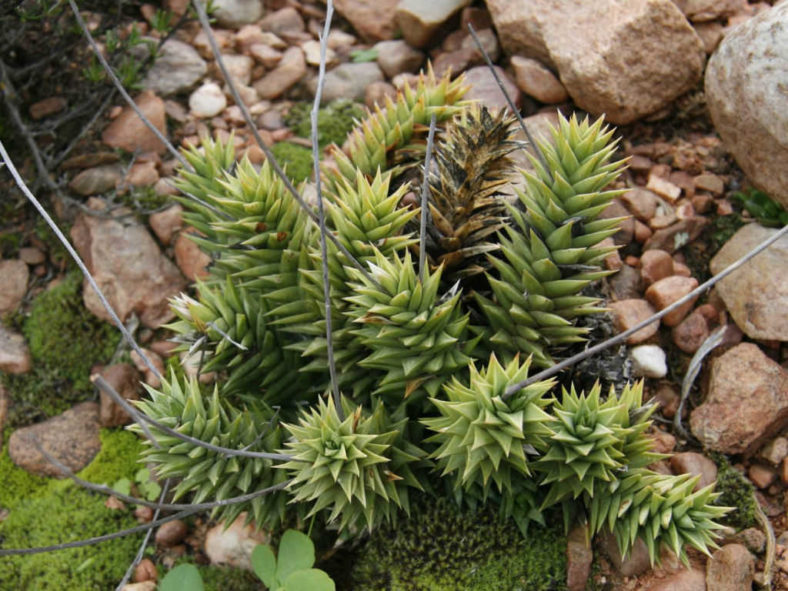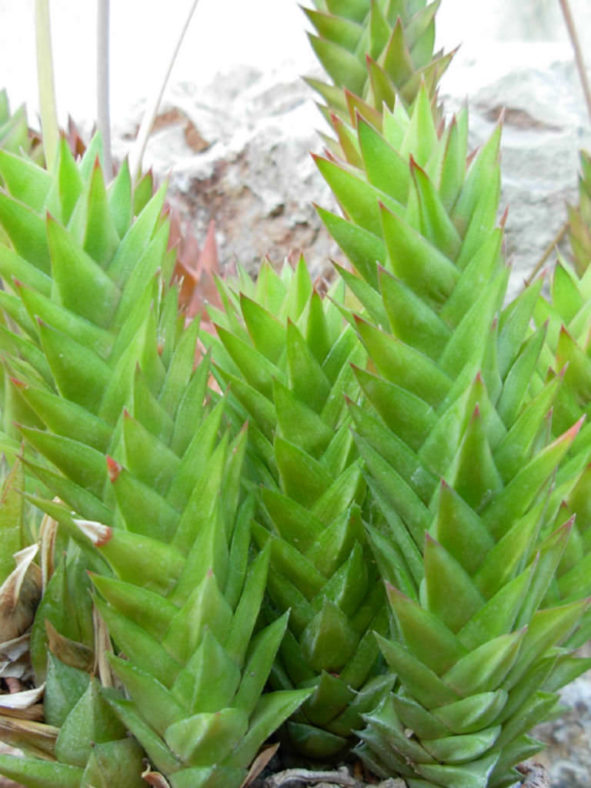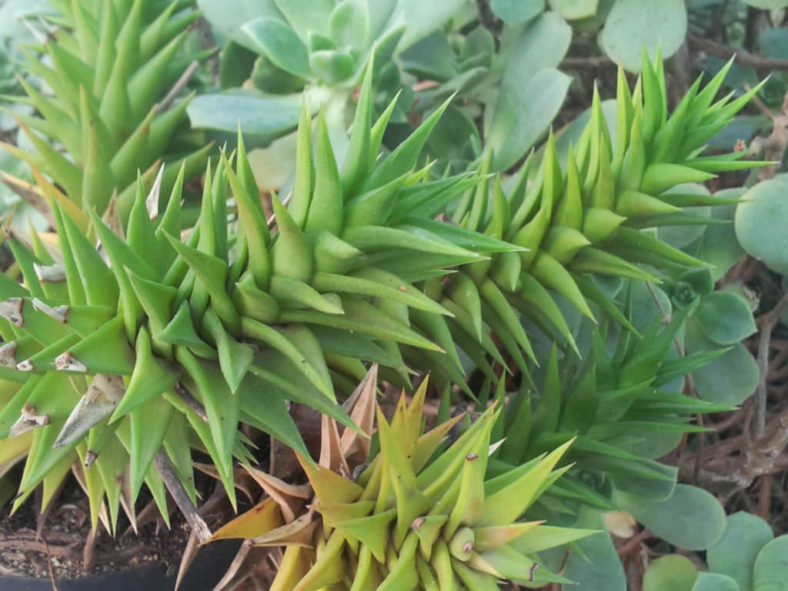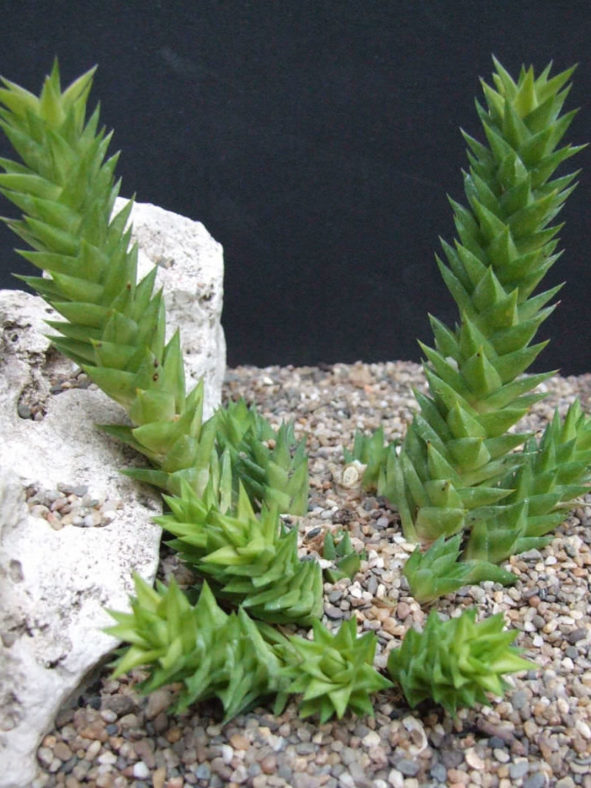Scientific Name
Astroloba spiralis (L.) Uitewaal
Common Name(s)
Rough Flowered Apicra
Synonym(s)
Aloe pentagona, Aloe spiralis, Apicra pentagona, Apicra spiralis, Haworthia gweneana, Haworthia spiralis, Tulista spiralis
Scientific Classification
Family: Asphodelaceae
Subfamily: Asphodeloideae
Genus: Astroloba
Origin
Astroloba spiralis is native to South Africa. It grows on karroid flats and lower slopes in the Eastern Cape and Little Karoo in the Western Cape province.
Description
Astroloba spiralis is a small clump-forming succulent with numerous column-like stems densely covered with smooth, sharp-pointed, deep green leaves crowded in five spiral rows. The stems can grow up to 8 inches (20 cm) long, branching from the base. They are initially erect but gradually become decumbent with age. The columns can reach up to 1.6 inches (4 cm) in diameter. The leaves are thick and fleshy, with an almost flat upper surface and a keeled underside from near the middle to the tip. They can measure up to 1.2 inches (3 cm) long and 0.6 inches (1.5 cm) wide. The margins and keel are roughened with tiny deltoid teeth.
The flowers appear in fall and are the truly distinguishing feature of this species. They are somewhat hexagonal, up to 0.5 inches (1.3 cm) long, and have a rough, green-lined, white, spongy texture and yellow tips.

Hardiness
USDA hardiness zone 10b to 11b: from 35 °F (+1.7 °C) to 50 °F (+10 °C).
How to Grow and Care
Astroloba plants are increasingly popular as succulent ornaments due to the extraordinary beauty of their leaf structure. Some have intricate patterns of lines, margins, spots, and raised tubercles on their leaves. Nearly all of them display a crystal-like regularity in their leaf arrangement. This is not always apparent in wild plants, which are usually disfigured by their harsh habitat.
In cultivation, Astrolobas are at their best when provided with some protection from the full sun. However, in a semi-shade environment, with well-drained soil and gentle conditions, Astrolobas can become remarkably beautiful and ornate.
Unfortunately, when conditions are not ideal, occasional random leaves can die, shrivel up, and go brown all along their stem. This is unfortunate because much of the beauty of plants comes from the intricate, crystalline pattern of their leaves. However, this disfigurement can be avoided by keeping the plants in optimal, fertile conditions – growing steadily and sheltered from stress.
See more at How to Grow and Care for Astroloba.
Links
- Back to genus Astroloba
- Succupedia: Browse succulents by Scientific Name, Common Name, Genus, Family, USDA Hardiness Zone, Origin, or cacti by Genus
Photo Gallery
Click on a photo to see a larger version.


